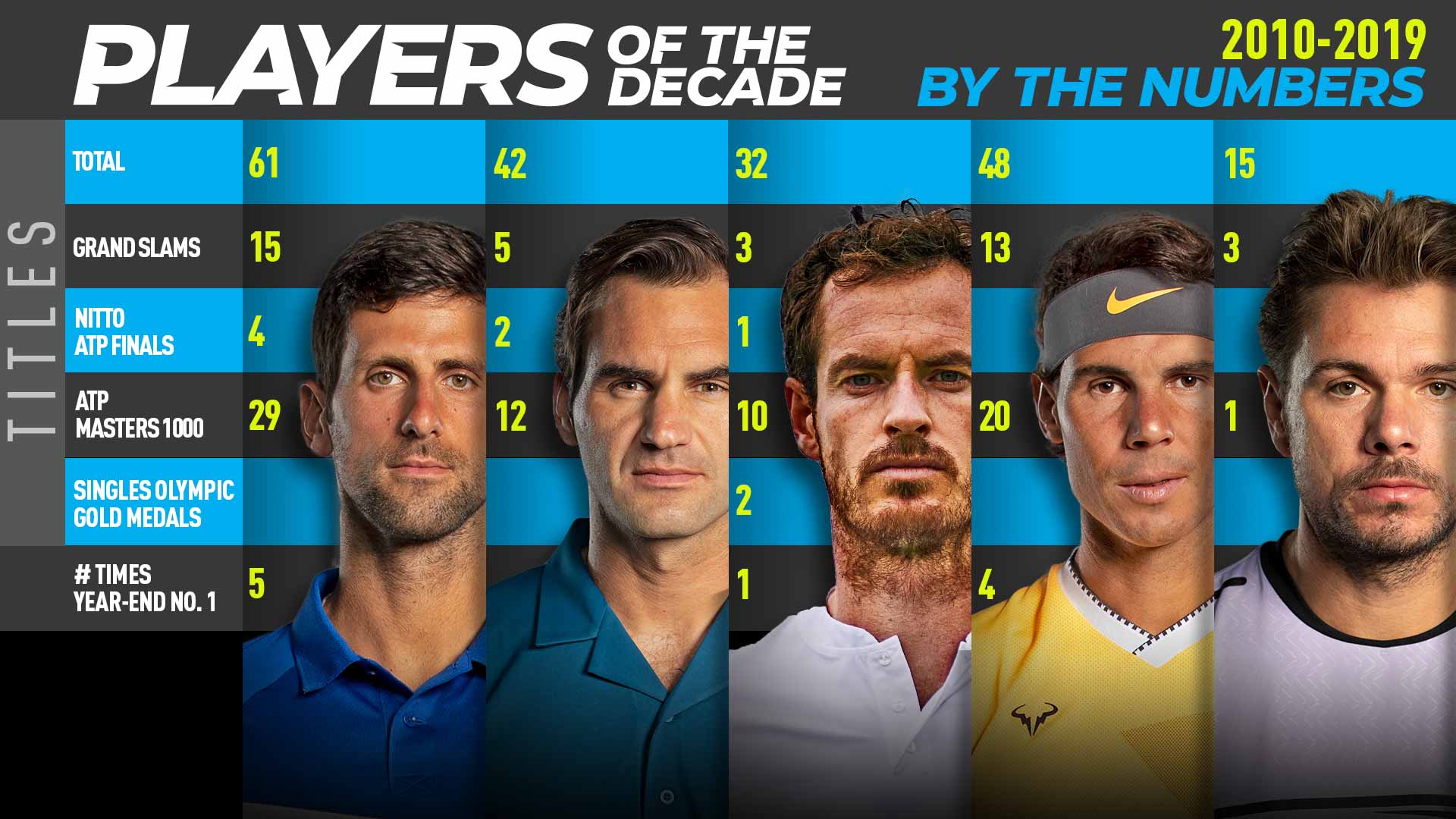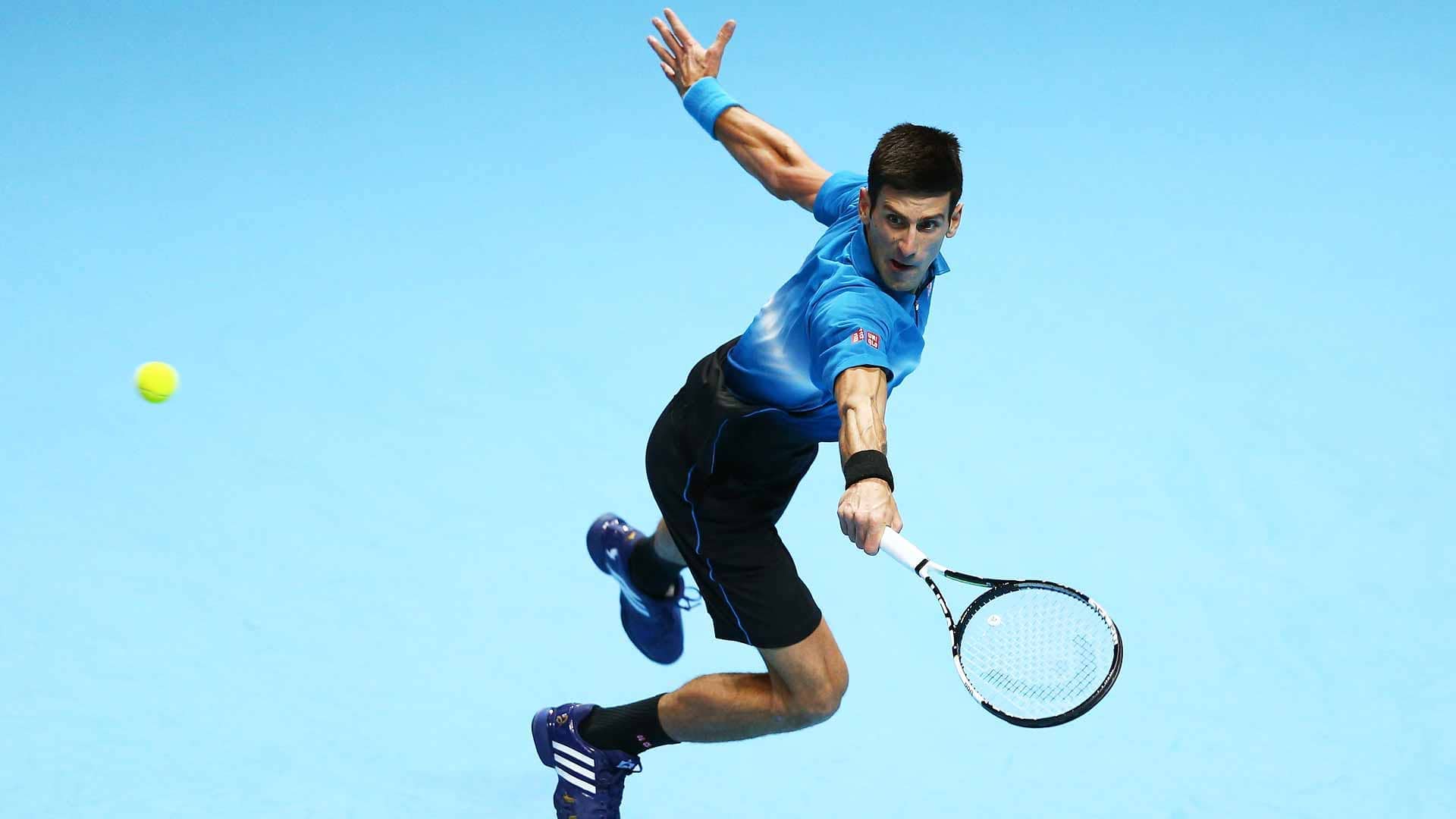Surprise! How To Hit A Second-Serve Ace Like Djokovic
Surprise! How To Hit A Second-Serve Ace Like Djokovic
Want to sneak in a second-serve ace against your next right-handed opponent? Down the T in the Ad court is your hot spot.
An Infosys ATP Beyond The Numbers analysis of 222 second-serve aces by the current Top 10 against right-handed opponents identifies that surprising to the forehand return is the most popular strategy used, with down the T in the Ad court attracting almost half of them.
The data set comes from ATP Masters 1000 events from 2011-2019 and the Nitto ATP Finals.
Second-Serve Ace Direction vs. Right-Handed Opponents
-
47%: Ad court T – to the forehand return
-
37%: Deuce court wide – to the forehand return
-
10%: Deuce court T – to the backhand return
-
6%: Ad court wide – to the backhand return
Overall, 84 per cent of second-serve aces were directed to the opponent’s forehand return side, with the majority of those occurring down the T in the Ad court.
Novak Djokovic led the pack, with both the total number of second-serve aces (58) and also the most down the T in the Ad court, with 40. The Ad court T aces accounted for 69 per cent (40/58) of the Serb’s second-serve ace total, and 100 per cent of his second-serve aces in the Ad court, with none coming out wide.
2019 Year-End Top 10: 2nd Serve Ace Total & Direction
|
|
Deuce T |
Deuce Wide |
Ad T |
Ad Wide |
TOTAL |
|
R. Nadal |
2 |
10 |
5 |
2 |
19 |
|
N. Djokovic |
1 |
17 |
40 |
0 |
58 |
|
R. Federer |
5 |
13 |
26 |
5 |
49 |
|
D. Thiem |
2 |
9 |
2 |
1 |
14 |
|
D. Medvedev |
7 |
8 |
8 |
2 |
25 |
|
S. Tsitsipas |
0 |
3 |
2 |
0 |
5 |
|
A. Zverev |
2 |
5 |
10 |
0 |
17 |
|
M. Berrettini |
1 |
0 |
0 |
0 |
1 |
|
R. Bautista Agut |
0 |
4 |
4 |
0 |
8 |
|
G. Monfils |
3 |
13 |
7 |
3 |
26 |
|
TOTAL / % |
23 (10%) |
82 (37%) |
104 (47%) |
13 (6%) |
222 (100%) |
Roger Federer knows a thing or two about hitting aces, as he currently sits in third place overall with career total aces (first & second) at 11,299. Federer, like Djokovic, hit more than half (26/49) of his second-serve aces down the T in the Ad court, surprising his right-handed opponents, who would have been expecting the traditional kick serve into the backhand body-jam location.
Gael Monfils went against the grain (but still to the forehand), hitting most of his second-serve aces (13) out wide in the Deuce court. Rafael Nadal also hit the majority of his second-serve aces (10/19) there as well, which is understandable as a left-handed server dipping into his secondary pattern.
Nadal’s Many Happy Returns To World No. 1
Daniil Medvedev, who before 2018 had not won a Masters 1000 match, now has 25 second-serves aces to his credit at this level, with 16 coming against the forehand return, and nine against the backhand return.
Second-serve aces are part risk, part bravado and mostly about winning the all-important guessing game about serve direction.
Editor’s note: Craig O’Shannessy is a member of Novak Djokovic’s coaching team.




